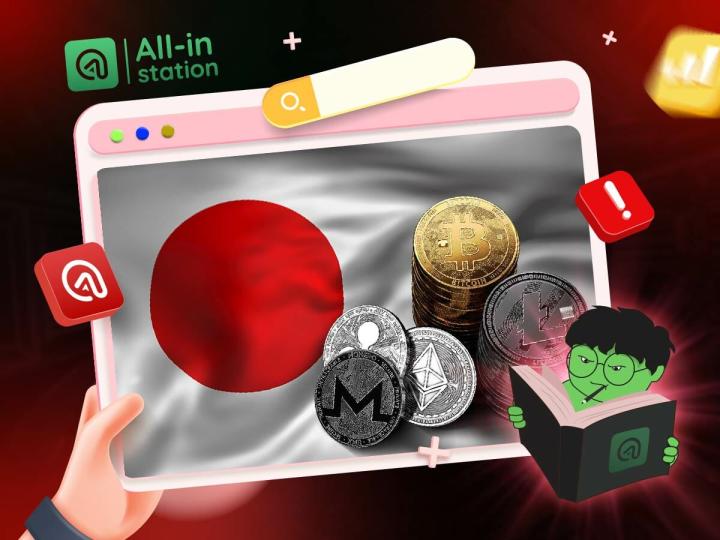
"What did CZ tweet again today?"
If you're asking this question, then it's clear that the BSC has been one of the few hot spots on the chain recently.
With CZ and the "Big Sister" becoming more active on Official Twitter, the approach of attracting attention + creating memes has gradually surfaced; at the same time, relying on the strong secondary traffic capability of the Binance APP, the direct placement of Binance Alpha within the app has also brought more heat to meme trading.
In the context of an overall poor market, BSC has a bit of a late-comer advantage, and what it is snatching is obviously the previous on-chain heat of Solana.
Traffic and fee income are the anxieties and desires of every chain.
Under business anxiety, there is bound to be competition between different chains, but in fact, different protocols on the same chain are also competing.
For example, Pump.fun and Raydium have each come up with a "copy" of the other.
Pump.fun does AMM
More than 20 days ago, Pump.fun started doing Raydium's business, launching a self-built AMM pool in an attempt to divert the liquidity income originally belonging to Raydium.
(See Pump.fun has built its own AMM pool? The intention to snatch Raydium's profits is obvious)
Since user transactions are first matched on Pump.fun's internal order book and completed using the platform's liquidity; when the internal order book is full, the transaction will be routed to the external order book, which actually relies on Raydium's liquidity pool.
In this model, Pump.fun has always been a "traffic provider" for Raydium, but is also subject to Raydium's rules as a result. Whenever a transaction flows to the external order book, Pump.fun has to pay a portion of the transaction fee, and this portion of the profit ultimately flows to Raydium's liquidity providers (LPs), with the current Raydium charging a 0.25% transaction fee on each transaction.
The motivation behind this is also very simple: in plain terms, Pump.fun, as the traffic entry point, has not fully eaten the meat brought by the traffic.
We mentioned at the time that in the context of a poor overall environment, it's not just the "cabbage" who are PVPing, but the projects are also putting on a good show of mutual competition.
Raydium does Launchpad
And just today, Raydium's counterattack strategy has also surfaced.
According to a report by Blockworks, Raydium is launching a token launch platform called LaunchLab, similar to a direct fork of pump.fun.
Although Raydium's Official Twitter has not directly posted about this new change, no smoke without fire, this also seems to mean that the tacit cooperation between Raydium and Pump.fun is gradually being broken.
As a spectator, the perception is very obvious - since you've taken my business, then I can also take your business.
Raydium's motivation is also very simple, as the backend of the liquidity pool, why not take a step further to eat the front-end entry traffic?
But the prerequisite for snatching business is to have the strength.
For token launch platforms like Pump.fun, copying a similar simple product may not come from technology, but from capital.
Further reports indicate that Raydium still has about $168 million on its balance sheet, which provides the greatest confidence for cloning a Pump.fun, i.e. investing money.
And the comments from an anonymous core contributor to Raydium quoted in the Blockworks report indirectly prove this point:
"The protocol started developing LaunchLab a few months ago, but shelved the project because it 'didn't want the team to feel that Raydium was competing directly with them'. After Pump.fun's AMM plan emerged, this so-called magnanimity seems to have dried up."
In other words, while Pump.fun was doing AMM, Raydium was already thinking about doing a Launchpad.
This is more like an unconscious competition and a conscious action to take the business further.
Project parties are obviously more clear than "cabbage" that transactions are the soul of the crypto business, and working on various aspects around transactions is more likely to eat the meat.
Of course, it's best to have the ability to eat up the entire chain, from the entry point to the backend.
Internal war moat
The AMM pool is essentially an open source design, and a meme coin launch platform is not difficult to implement; since the two sides have no development barriers on the product, Pump.fun and Raydium could have done their respective businesses.
The only problem is, where are the two sides' moats, and what will they rely on to win?
Pump.fun's moat is obviously in the traffic advantage brought by user habits. As a meme coin launch platform, Pump.fun has firmly grasped the attention of a portion of users through its unique community culture and user stickiness.
And once this user habit is formed, it is difficult to easily transfer to other platforms. More importantly, Pump.fun's user ecosystem has the attribute of a traffic entry point, which provides it with continuous growth momentum.
On the other hand, Raydium's moat is built on the essential demand for its liquidity pool transactions. As one of the most important DeFi infrastructures on Solana, Raydium's ecological control power comes not only from its deep liquidity pool, but also from its position in the transaction network across the entire Solana chain.
In other words, Raydium's advantage is not just technological, but the dependence of the entire ecosystem on it.
However, the strength of the moat is not just a static existence.
In the current environment, Pump.fun and Raydium's respective moats also face different challenges:
Whether Pump.fun's traffic can continue to grow depends on whether it can constantly launch new features and new gameplay to attract users. Raydium, on the other hand, needs to maintain its lead in liquidity competition and further consolidate its ecological position through capital and technological investment.
Liquidity depletion, how many will participate in this internal war?
As the two major protocols are busy competing with each other, a bigger question arises:
How many users will actually participate in this internal war? Is there really enough market space and user base to support it?
Looking at the current market environment, the crypto industry as a whole is in a downturn, with liquidity and user activity significantly lower than before. In this context, whether it's Pump.fun or Raydium, they are actually competing for a shrinking pie.
If there is no new liquidity injection, or if there are not more "cabbage" coming in, this competition is actually meaningless.
Whether it's BSC, Solana or other public chains, inter-chain competition and intra-chain competition are intensifying. The underlying driver of this competition is the industry's desire for traffic and fee income. However, if the overall crypto industry environment does not improve, this competition may ultimately be just a flash in the pan.
For the entire industry, the real breakthrough lies not in internal wars or inter-chain wars, but in how to enhance the overall attractiveness of the industry. Whether it's through innovative product forms, lowering user thresholds, or through broader education and promotion, attracting new liquidity is the key to solving the problem.
Welcome to join the official BlockBeats community:
Telegram subscription group: https://t.me/theblockbeats
Telegram discussion group: https://t.me/BlockBeats_App
Official Twitter account: https://twitter.com/BlockBeatsAsia







